Clancy Tucker's Blog, page 194
March 12, 2017
13 March 2017 - THE BEAR FLAG REVOLT
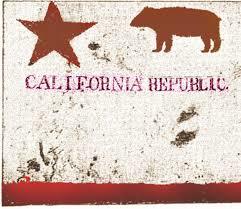
THE BEAR FLAG REVOLT
G'day folks,
Ever hear of this event? Well, the California Republic was an unrecognized breakaway state that, for twenty-five days in 1846, militarily controlled the area to the north of the San Francisco Bay in the present-day state of California.
The grizzly bear on California’s state flag can trace its origins to a revolt that unfolded in 1846 during the early days of the Mexican-American War. California was still owned by Mexico at the time, but it had experienced an influx of American settlers, few of whom had bothered to obtain legal land grants from the authorities. As rumors swirled about a coming conflict between the United States and Mexico, many pioneers grew worried that they would be expelled from the territory or attacked by Mexican forces. The situation only heated up in the spring of 1846, when the famed explorer and U.S. military officer Captain John C. Fremont arrived in California at the head of a 60-man geographical survey.

Fremont was supposed to be on a mission to locate the source of the Arkansas River, but he wasted little time in encouraging the local American settlers to carry out an uprising. With Fremont’s tacit approval, a small band of farmers, hunters and mountain men from the Sacramento Valley resolved to strike a pre-emptive blow against the Mexicans.
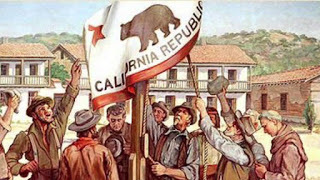
On June 10, a handful of settlers led by a frontiersman named Ezekiel “Stuttering Zeke” Merritt seized a herd of 170 horses owned by the Mexican government. Four days later, another band of around 30 men captured the town of Sonoma and arrested its commandant, a respected Mexican General named Mariano Vallejo. Under the leadership of Merritt and another settler named William Ide, they declared independence from Mexico and announced the creation of a new “California Republic.” To make it official, they fashioned a crude flag with a picture of a grizzly bear and a lone red star and hoisted it over Sonoma. The rebel pioneers soon became known as the “Bear Flaggers.”
Following the capture of Sonoma, Captain Fremont finally took an active role in the uprising and assumed command of the settlers. The Bear Flaggers proceeded to occupy San Francisco on July 2, but their revolt would prove short-lived. News arrived that the Mexican-American War had officially been declared a month earlier, and on July 7, U.S. Navy forces under Commodore John D. Sloat invaded California and captured Monterey.
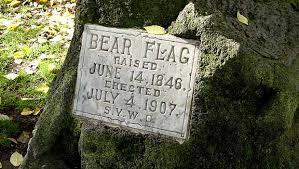
The Bear Flaggers—most of whom favored American annexation—promptly abandoned their rebellion and cast their lot with the United States. After flying for just a few short weeks, the flag of the California Republic was lowered and replaced with the Stars and Stripes. California would go on to enter the union in 1850 after being ceded to the U.S. in the treaty ending Mexican-American War. In 1911, it adopted a version of the Bear Flaggers’ grizzly bear standard as its official state flag.

Clancy's comment: Don't you just love revolutionaries?
I'm ...


Published on March 12, 2017 15:57
March 11, 2017
12 March 2017 - THE ARMADILLO

THE ARMADILLO
G'day folks,
Here are some interesting facts about an ancient animal. Armadillos are New World placental mammals with a leathery armour shell. The Chlamyphoridae and Dasypodidae are the only surviving families in the order Cingulata, part of the superorder Xenarthra, along with the anteaters and sloths. Translated from Spanish to mean ‘little armoured one’, armadillos are the only living mammal with such a shell!
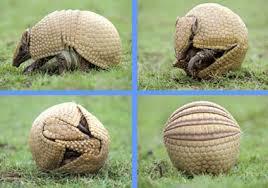


Amazing Facts About the Armadillo
There are 20 different species of armadillo, all of which live solely in Latin America with the exception of the Nine-banded armadillo which has expanded into the USA.The Nine-banded armadillo is the official state small mammal of Texas, nicknamed the ‘hillbilly speed bump’ as they are hit on the roads so often. During the 1920s depression, the Nine-banded armadillo was eaten, referred to as the ‘Hoover Hog’ as a result of President Hoovers failure to keep meat on the tables.Expanding northward, the Nine-banded armadillo is now a common sight in Missouri, USA.Armadillo is a Spanish word, translating to ‘little armoured one’, named by Spanish explorers to Latin America.Armadillos are covered in bony plates that create their ‘armour’. They are the only living mammal to wear such a shell. The plates cover their back, legs, head and tail, composed of small epidermal scales of horn-covered bone. The plates overlap each other for added protection.Many think of armadillos rolling themselves into a ball for protection but in fact there is only one species – the three-banded armadillo – which can encase itself in its shell, curling its head and feet inwards forming a hard ball. This tactic confused predators, even a dog cannot undo the armadillo’s ball.Due to their lack of fat stores and low metabolic rate, armadillos hate the cold. If there are times of unusually cold weather, a whole population can be wiped out!Armadillos have a low body temperature, between 33-36˚C (91-97˚F), a human’s body temperature is 37˚C (98.6˚F).Generally solitary creatures except during mating, they will sometimes group together in a burrow in cold conditions to keep warm.Armadillos are closely related to sloths and anteaters, sharing some similarities. For example, an armadillos tongue is long and sticky, like anteaters, designed to extract ants and termites from their tunnels.An armadillos diet is comprised of beetles, insects, ants, termites, plants and some fruit. If given the chance, they will eat small ground-nesting birds and their eggs.With very poor eyesight and hearing, armadillos rely on their strong sense of smell to hunt. They can smell things which are up to 20cm below the ground! They also have long straggly fur on their underside to allow them to feel what they are walking over, used similarly to a cat’s whiskers.Armadillos have between 1-15 babies. The Nine-banded armadillo always gives birth to 4 identical quadruplets. They are produced from a single egg which splits in four, meaning the babies will all be the same gender.Armadillos are able to delay implantation of the fertilised egg at times of stress; it is thought this can be delayed for as long as 2 years!Baby armadillos have soft leathery skin which hardens after a few weeks.Where armadillos live is dependent on soil type, they prefer sandy or loam soils which are loose and porous, making it easier to dig for food and make burrows.Armadillos have very strong legs with huge front claws which aid digging.Armadillos can swim well but, due to their heavy shell, they have to swallow air to inflate their stomach to give them buoyancy. They can also hold their breath for up to 6 minutes so will sometimes walk across the bottom of a river or lake.When armadillos feel threatened they tend to run away into their burrows or into thorny vegetation where their armour protects them and predators cannot follow. Some species will jump 3-4ft in the air when they are surprised.

Clancy's comment: Another amazing species.
I'm ...
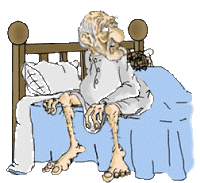

Published on March 11, 2017 13:06
March 10, 2017
11 March 2017 - COMMENTS ABOUT MEN

COMMENTS ABOUT MEN
G'day folks,
Here are some view points about men.











Clancy's comment: Mm ... Don't believe everything you read.
I'm ....

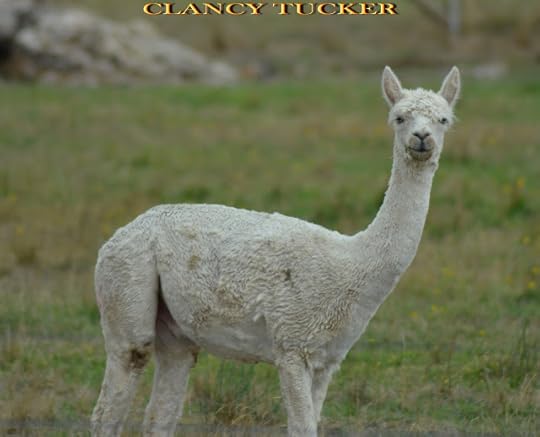
Published on March 10, 2017 12:31
March 9, 2017
10 March 2017 - MARCUS CLARKE
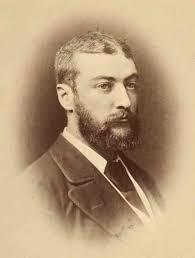
MARCUS CLARKE
G'day folks,
Welcome to some very interesting details about a man well known in this part of the world. Marcus Andrew Hislop Clarke FRSA was an English-born Australian novelist and poet, best known for his novel For the Term of His Natural Life.
Marcus Andrew Hislop Clarke (1846-1881), journalist and novelist, was born on 24 April 1846 at 11 Leonard Place, Kensington, London, the only child of William Hislop Clarke, a Chancery lawyer, and his wife Amelia Elizabeth, née Matthews. His grandfather, Dr Andrew Clarke, a retired military medical officer, made a fortune in the West Indies and settled in Ireland. Several of his family distinguished themselves in the army, the colonial service or the law. His father had a flourishing practice in London and Marcus regarded his future as assured. In circumstances never made quite clear the whole structure collapsed. The father was removed to Northumberland House in 1862 after a physical and mental, as well as financial, breakdown and died there about a year later.
The boy was thus forced to give up the life of dilettante literary frittering which at 16 had been his expectation. He was not prepared for any career. He spoke loftily of prospects at the Foreign Office and of living for a year or two in France to perfect his French; but this was vague. Earlier an attempt was made to get him into the army but he was turned down for physical disabilities. All that is certain is that he was spoilt, conceited and aimless; clearly his view of life was much coloured by the novels which he avidly read. Probably under persuasion from relations who could see no solution for him in England, he chose to go to Australia.
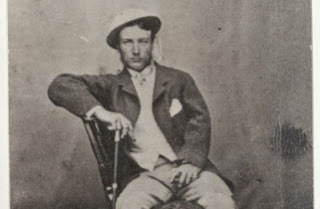
In his impressionable years Clarke's home associations had been both brilliant and drab; his father, alternately a bon viveur and a recluse, entertained extravagantly, introduced the boy too early to a life of sophistication and for the rest neglected him. His mother's death when he was 4 exacerbated his loneliness. A sickly infant with an anchylosed left arm, his health improved although the arm remained permanently shrunken; he retained through life a slight stammer, probably a residue of childish insecurity, which, however, was not thought unattractive. What he lacked physically he made up in charm, fortified with wit, his one practical talent since in the end it made a journalist of him.

In 1858-62 Clarke attended the Cholmeley Grammar School, Highgate, where he fell foul of the headmaster for lack of application and as a senior was deprived of the poetry prize as a discipline. Afterwards, however, he recalled Dr Dyne's severity with a rueful respect. His contemporaries at Highgate were the two Hopkins brothers, Gerard Manley and Cyril, and E. H. Coleridge; the grave of S. T. Coleridge was in the school grounds, for the chapel then also served as parish church. Nesfield, the grammarian, was a master at Highgate.
After his father's collapse, his cousin, (Sir) Andrew Clarke, then in London, arranged to send the youth to Melbourne where an uncle, James Langton Clarke, a County Court judge at Ararat, could keep an eye on him. He arrived on 6 June 1863 with something like £800 scraped together from his father's mysteriously dissipated resources.
On Andrew Clarke's recommendation employment was found for him in a bank, but he proved totally unfitted for it. He later wrote some amusing impressions of the experience. In his first year in Melbourne he gathered many observations which afterwards served as literary material, the product of a lively mind and a perceptive eye.
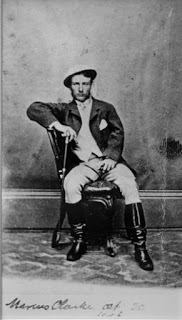
Presently, however, like one of his own 'new-chums', he disappeared up-country to try out station life. His uncle had an interest in the twin stations of Swinton and Ledcourt with headquarters at Glenorchy where Clarke appears to have been reasonably happy and contemplated taking up land himself. His plans came to nothing after a disastrous expedition into western New South Wales in search of land, a journey in time of drought which cost him heavily in money and in which a companion lost his life. Back at Swinton he was persuaded by a visitor, Dr Robert Lewins, an amateur scientist and Comtean philosopher who prided himself on 'discovering' the young genius, to return to Melbourne and join the Argus. From this point his bent was clear, although Clarke was too mercurial in temperament to remain a staff writer.
Late in 1867 he began contributing a column of topicalities under the heading 'The Peripatetic Philosopher', purporting to be the observations of a kind of Melbourne Diogenes inhabiting a gas pipe on Cole's Wharf. He was at once established. The first notable victim of his witty impertinence was the Duke of Edinburgh, then on a state visit to the colonies. Clarke's association with the Argus lasted a number of years, but he eventually quarrelled, transferring his allegiance to the Melbourne Herald, the Daily Telegraph and finally the Age. He retained a schoolboy humour: for example, in parting from the Argusat a time when all the papers were fighting a battle of principle with the Victoria Racing Club, he published a high-spirited 'spoof' in the 'scurrilous' rival Herald, holding the Argus up to ridicule and pretending to report the running of the Melbourne Cup by direct observation from a camera obscura set up on the roof of the Herald office.
Clarke from the first lusted after editorial power, for which he never had the necessary steadiness. Whatever remained of his patrimony seems to have gone, along with other funds contributed by a group of literary friends, to buy the Australian Monthly Magazine, which he edited under the altered title of the Colonial Monthly in 1868-69. For it he wrote his novel 'Long Odds'; two instalments in July and August 1868 were contributed by his friend G. A. Walstabwhen Clarke was seriously incapacitated by a fall from a horse. When the novel ended, his energies flagged; the magazine passed to J. J. Shillinglaw and soon failed. Clarke put what he could recoup from it into the comic weekly Humbug, but it also quickly collapsed; Melbourne Punch ascribed its demise to morbus clerici.
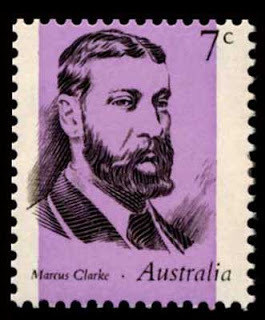
At the beginning of 1870 he was certainly the editor of the Australian Journal, where his major novel, 'His Natural Life', began to appear in February; but when it concluded two years and a half later the patience of the proprietors had long been exhausted. He clearly did not last long as editor. Instead he sought and obtained a position at the Public Library of Victoria, first becoming secretary to the trustees and later sub-librarian. He appears to have carried out these duties with reasonable efficiency, but levity pursued him and in the end brought about his downfall. One notable example was shown in a controversy sparked off by his article in the opening number of the Victorian Review, November 1879, in which he argued that the advance of science had led to the abandonment of belief in the miraculous and that Christianity was moribund as an intellectual and moral force.
The article provoked Bishop Moorhouseinto reply and Clarke was accused of atheism. His last word, published in the Melbourne Review, April 1880, cleverly exposed the weaknesses in the bishop's argument and scored a notable victory. These exchanges aroused enormous public interest in Melbourne. Later that year Clarke had a hand surreptitiously in the presentation of 'The Happy Land', a satirical operetta on a tinder-dry political subject: the row between the Berry government and the Legislative Council. This caused another furore and probably contributed to his later downfall. Apart from this work of mischief he was very active in the theatre both as an original author and as a translator. However, he wrote nothing for the stage that made any lasting impression. His liveliest dramatic writings were pantomimes, sometimes in collaboration with R. P. Whitworth.
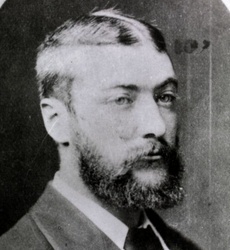
By disposition excitable, he worked hard, for he did not much reduce his contributions to the papers when he entered the Public Library. It may be suspected that he drank heavily; very early in his career he complained of dyspepsia and a disordered liver. He lived extravagantly, somewhat after his father's style, and ran hopelessly into debt. Anxiety and overwork led to sickness. He was forced into insolvency in 1874 and again in 1881, so much to the disapproval of the library trustees that on the second occasion he barely escaped dismissal. The real position, however, was obscured since the disappointment he experienced at this time in being refused the post of chief librarian led to a sudden collapse of his powers and he died, officially of erysipelas, on 2 August 1881. There were rumours of suicide but they must be discounted.
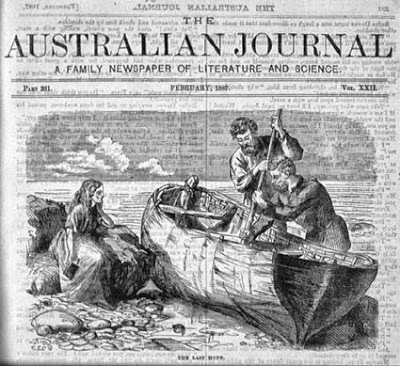
In 1869 Clarke married the actress Marian, daughter of John Dunn, an Irish actor. Of their six children, at least two married in Victoria and survived him.
After Clarke's death his friend Hamilton Mackinnon assembled the Marcus Clarke Memorial Volume (Melbourne, 1884), a selection of his most popular journalism with a biographical introduction. The witty, often malicious, ephemeral humour which colours the greater part of these writings contrasts strangely with the dark, powerful imagination exhibited in His Natural Life, the revised, shortened and best known version of which appeared in book form in 1874 and 1875. The title, For the Term of His Natural Life, was applied by publishers to this work after Clarke's death.

Whether the light and trivial social journalist, the literary butterfly, or the serious author of this great, if defective, novel is the true Marcus Clarke, who is to say? The best defence of his journalism is that, viewed in its context, it still seems extraordinarily alive and vivid, providing a brilliant index to a very vigorous period of colonial literary life. His Natural Life, with all its shortcomings, in the end redeems him abundantly from the charge of mental trifling. A novel in the grand tradition, it places him with Charles Reade, Victor Hugo and Dostoevsky among the great nineteenth-century visionaries who found in the problems of crime and punishment a new insight, especially relevant in the convict-founded Australian colonies, into the foundations of human worth. This book has outlasted all his other writings, and is the one work of fiction produced in the whole first century of Australia's history to justify description as monumental.

Clancy's comment: I read his most famous book as a kid and was enthralled by his descriptions.
I'm ...


Published on March 09, 2017 13:24
March 8, 2017
9 March 2017 - THE BARRACUDA

THE BARRACUDA
G'day folks,
The barracuda is a ray-finned fish known for its large size, fearsome appearance and ferocious behaviour.
The barracuda is highly evolved to be a master predator in its environment. This fish has been developing its skills for 50 million years!
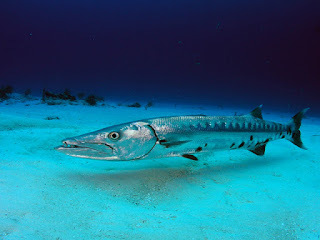
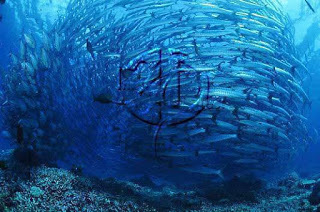
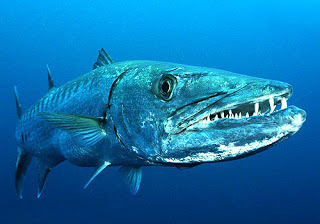
Amazing Facts About the BarracudaThe barracuda is a large species of fish found in the warmer, coastal regions of the world’s oceans.There are more than 20 different species of barracuda that range in size from less than 50cm to nearly 2 meters in length.Regardless of the species, all barracuda have a similar elongated appearance, with a pointed head and powerful jaws, containing rows of sharp fang-like teeth used for eating larger prey.The upper part of their body is covered with scales that can be black, brown, grey or blue in color. The belly is always white. Irregular dark spots are located on both sides of the body. The barracuda’s diet consists of different types of fish: groupers, anchovies, mullets, snappers and sometimes squids and crustaceans.Shiny objects attract the barracuda’s attention. Because of that, they usually hunt fish with golden or silver scales. Divers might be wise to avoid wearing jewellery in their presence!Barracuda can swim at 25 miles per hour which is useful both for hunting and for escaping from predators such as killer whales and sharks.Generally, adult barracudas are considered to be solitary when it comes to hunting, though young barracudas tend to gather in large ‘schools’, sometimes in hundreds or even thousands. Schooling offers the young fish protection from predators on the basis of safety in numbers.Often, when a predator attacks a school, the school will form a confusing ‘tornado’, preventing any one barracuda being fixed upon as prey in the eyes of the predator.Mating season takes place in the spring. Males and females release eggs and sperm cells in the water where they will combine to form fertilized eggs. Females produce and release more than 1000 eggs but few survive to adulthood.Human beings pose the greatest danger to barracudas. In addition to habitat destruction, climate change and pollution, they are also being threatened by ‘sport’ fishing.

Clancy's comment: Mm ... Looks harmless enough ... But.
I'm ...


Published on March 08, 2017 13:37
March 7, 2017
8 March 2017 - LOST WORDS

LOST WORDS
G'day folks,
Here is a collection of words that you may have never seen before. They come with an example of how they were once used, and some might be helpful for you authors in future novels.
acrasial adj 1851 -1851 ill-regulated; ill-tempered The acrasial judge was known for her rants against younger lawyers.
addecimate v 1612 -1755 to tithe They addecimated regularly but were not otherwise known for their charity.
adimpleate v 1657 -1657 to fill up The new technique adimpleates the cans with milk through injection.
adnascentia npl 1706 -1731 root-like branches that sprout into the earth from a plant's stem Every winter, the adnascentia would shift around, destroying the lawn's even texture.
aeipathy n 1847 -1853 continued passion; an unyielding disease Her aeipathy for stamp collecting bordered at times on the pathological.
affictitious adj 1656 -1656 feigned; counterfeit The forger was caught despite his masterfully-crafted affictitious signatures.
affuage n 1753 -1847 right to cut wood in a forest for family fire The family's right of affuage ensured they would have enough wood for winter.
agonarch n 1656 -1656 judge of a contest or activity Our competition will require six agonarchs to ensure fairness.
agonyclite n 1710 -1710 member of a heretical sect that stood rather than kneeled while praying Agonyclites must have had hardy feet to endure their services.
airgonaut n 1784 -1784 one who journeys through the air Balloonists, skydivers and other airgonauts are all a little mad, if you ask me.
alabandical adj 1656 -1775 barbarous; stupefied from drink His behaviour after the party was positively alabandical.
albedineity n 1652 -1652 whiteness The monotonous albedineity of the snow-covered field was blinding.
alogotrophy n 1753 -1853 excessive nutrition of part of body resulting in deformity Was he born with that huge head, or is it the result of alogotrophy?
amandation n 1656 -1755 act of sending away or dismissing His rude amandation of his guests earned him a reputation for curtness.
amarulence n 1731 -1755 bitterness; spite After losing her job to a less qualified man, she was full of amarulence.
amorevolous adj 1670 -1670 affectionate; loving Our father, though amorevolous, could be a strict taskmaster at times.
antipelargy n 1656 -1731 reciprocal or mutual kindness; love and care of children for their parents Having never received any antipelargy, they wrote their daughter out of the will.

Clancy's comment: Well, did you know any? Most made me feel alabandical.
I'm ...


Published on March 07, 2017 12:30
March 6, 2017
7 March 2017 - INTERESTING WORDS

INTERESTING WORDS
G'day folks,
Our vocabulary is forever changing, especially since the invention of computers. Who’d have thought back in the 30’s, 50’s, and 60’s that words like ‘mouse’ and ‘gay’ would have totally different meanings? They do. However, whilst we invent new words or meanings, we have tended to forget words that have been around for decades. Here’s a list of words; some of which you may not have ever seen. Many might bring back memories of a bygone era.
Acquiesce Submit or comply silently or without protest.
Ailurophile A cat-lover.
Ameliorate To make or become better, more bearable, or more satisfactory
Assemblage A gathering.
Becoming Attractive.
Beleaguer To exhaust with attacks.
Brood To think alone.
Bucolic In a lovely rural setting.
Bungalow A small, cozy cottage.
Callipygous Having beautifully proportioned buttocks.
Cathartic Inducing catharsis; purgative.
Chatoyant Like a cat’s eye.
Comely Attractive.

Conflate To blend together.
Crestfallen Dejected; dispirited; discouraged
Cynosure A focal point of admiration.
Dalliance A brief love affair.
Demesne Dominion, territory.
Demure Shy and reserved.
Denouement The resolution of a mystery.
Desuetude Disuse.
Desultory Slow, sluggish.
Diaphanous Filmy.
Dissemble Deceive.
Dulcet Sweet, sugary.
Ebullience Bubbling enthusiasm.
Effervescent Bubbly.
Efflorescence Flowering, blooming.Effluence The act or an instance of flowing out.
Elision Dropping a sound or syllable in a word.
Elixir A good potion.
Eloquence Beauty and persuasion in speech.
Embrocation Rubbing on a lotion.
Emollient A softener.

Ephemeral Short-lived.
Epiphany A sudden revelation.
Erstwhile At one time, for a time.
Ethereal Gaseous, invisible but detectable.
Evanescent Vanishing quickly, lasting a very short time.
Evocative Suggestive.
Fetching Pretty.
Felicity Pleasantness.
Forbearance Withholding response to provocation.
Fugacious Fleeting.
Frisson A moment of intense excitement.
Furtive Shifty, sneaky.
Gambol To skip or leap about joyfully.
Glamour Beauty.
Gossamer The finest piece of thread, a spider’s silk.
Halcyon Happy, sunny, care-free.
Harbinger Messenger with news of the future.
Imbrication Overlapping and forming a regular pattern.
Imbroglio An altercation or complicated situation.
Imbue To infuse, instill.
Incipient Beginning, in an early stage.
Ineffable Unutterable, inexpressible.
Ingénue A naïve young woman.
Inglenook A cozy nook by the hearth.
Insouciance Blithe nonchalance.

Clancy's comment: Mm … It’s a shame that many words are still not used in every day language. Some have a nice ring to them. Sometimes I slip words like scamp and scamper into stories, just because I can ...I'm ...


Published on March 06, 2017 13:48
March 5, 2017
6 March 2017 - EDGAR ALLAN POE
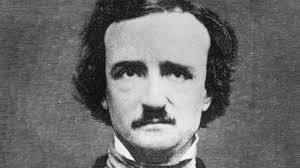
EDGAR ALLAN POE
G'day folks,
Edgar Allan Poe was an American writer, editor, and literary critic. Poe is best known for his poetry and short stories, particularly his tales of mystery and the macabre. Edgar Allan Poe is famous for his tales and poems of horror and mystery, including "The Fall of the House of Usher," "The Tell-Tale Heart" and "The Raven."
Synopsis
Born on January 19, 1809, in Boston, Massachusetts, writer, poet, critic, and editor Edgar Allan Poe's tales of mystery and horror gave birth to the modern detective story and many of his works, including “The Tell-Tale Heart” and “The Fall of the House of Usher,” became literary classics. "The Raven," which he published in 1845, is considered among the best-known poems in American literature.

Edgar Allan Poe's evocative short stories and poems captured the imagination and interest of readers around the world. His imaginative storytelling led to literary innovations, earning him the nickname "Father of the Detective Story." Some aspects of his life, like his literature, is shrouded in mystery, and the lines between fact and fiction have been blurred substantially since his death.
Poe never really knew his parents — Elizabeth Arnold Poe, a British actress, and David Poe, Jr., an actor who was born in Baltimore. His father left the family early in Poe's life, and his mother passed away from tuberculosis when he was only three. Separated from his brother William and sister Rosalie, Poe went to live with John and Frances Valentine Allan, a successful tobacco merchant and his wife, in Richmond, Virginia. Edgar and Frances seemed to form a bond, but he had a more difficult relationship with John Allan. By the age of 13, Poe was a prolific poet, but his literary talents were discouraged by his headmaster and John Allan, who preferred that Poe follow him in the family business. Preferring poetry over profits, Poe reportedly wrote poems on the back of some of Allan's business papers.
Money was also an issue between Poe and John Allan. Poe went to the University of Virginia in 1826, where he excelled in his classes, however, he didn't receive enough funds from Allan to cover all of his costs. Poe turned to gambling to cover the difference, but ended up in debt. He returned home only to face another personal setback—his neighbor and fiancée Sarah Elmira Royster had become engaged to someone else. Heartbroken and frustrated, Poe moved to Boston.
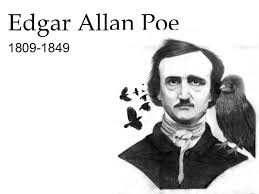
Early Career
While in Boston, Poe published his first book, Tamerlane and Other Poems in 1827. He also joined the U.S. Army around this time. Two years later, Poe learned that Frances Allan was dying of tuberculosis, but by the time he returned to Richmond she had already passed away. While in Virginia, Poe and Allan briefly made peace with each other, and Allan helped Poe get an appointment to the United States Military Academy at West Point. Before going to West Point, Poe published a second poetry collection Al Aaraaf, Tamerlane, and Minor Poemsin 1829. Poe excelled at his studies at West Point, but he was kicked out after a year for his poor handling of his duties.
During his time at West Point, Poe had fought with his foster father, who had remarried without telling him. Some have speculated that Poe intentionally sought to be expelled to spite Allan, who eventually cut ties with Poe.
After leaving West Point, Poe published another book and focused on his writing full time. He traveled around in search of opportunity, living in New York City, Baltimore, Philadelphia and Richmond. From 1831 to 1835, he lived in Baltimore, where his father was born, with his aunt Maria Clemm and her daughter Virginia. In 1834, John Allan died, leaving Poe out of his will, but providing for an illegitimate child Allan had never met.
Poe, who continued to struggle living in poverty, got a break when one of his short stories won a contest in the Baltimore Saturday Vister. He began to publish more short stories and in 1835 landed an editorial position with the Southern Literary Messenger in Richmond. During this time, Poe also began to devote his attention to his young cousin, Virginia, who became his literary inspiration, as well as his love interest. The couple married in 1836 when she was only 13 years old.

At the Southern Literary Messenger, Poe developed a reputation as a cut-throat critic, writing vicious reviews of his contemporaries. His scathing critiques earned him the nickname the "Tomahawk Man." Poe also published some of his own works in the magazine, including two parts of his only novel, The Narrative of Arthur Gordon Pym. His tenure at the magazine proved short. Poe's aggressive-reviewing style and sometimes combative personality strained his relationship with the publication, and he left the magazine in 1837. His problems with alcohol also played a role in his departure, according to some reports.
Poe went on to brief stints at Burton's Gentleman's Magazine, Graham's Magazine, The Broadway Journal, and he also sold his work to Alexander’s Weekly Messenger, among other journals. Despite his success and popularity as a writer, Poe continued to struggle financially and he advocated for higher wages for writers and an international copyright law.
Major Works
In late 1830s, Poe published Tales of the Grotesque and Arabesque, a collection of stories. It contained several of his most spine-tingling tales, including "The Fall of the House of Usher," "Ligeia" and "William Wilson." Poe launched the new genre of detective fiction with 1841's "The Murders in the Rue Morgue." A writer on the rise, he won a literary prize in 1843 for "The Gold Bug," a suspenseful tale of secret codes and hunting treasure.
In 1844, Poe moved to New York City where he published a news story in The New York Sun about a balloon trip across the Atlantic Ocean that he later revealed to be a hoax. His stunt grabbed attention, but it was the 1845 publication of his poem "The Raven" which made him a literary sensation. "The Raven" is considered a great American literary work and one of the best of Poe's career. In the work, Poe explored some of his common themes—death and loss. An unknown narrator laments the demise of his great love Lenore. That same year, he found himself under attack for his stinging criticisms of fellow poet Henry Wadsworth Longfellow. Poe claimed that Longfellow, a widely popular literary figure, was a plagiarist, which resulted in a backlash against Poe.
Continuing work in different forms, Poe examined his own methodology and writing in general in several essays, including "The Philosophy of Composition," "The Poetic Principle" and "The Rationale of Verse." He also produced another thrilling tale, "The Cask of Amontillado," and poems such as "Ulalume" and "The Bells."
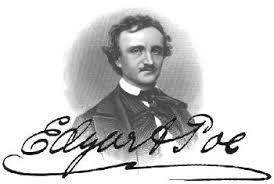
Poe was overcome by grief after the death of his beloved Virginia in 1847. While he continued to work, he suffered from poor health and struggled financially. His final days remain somewhat of a mystery. He left Richmond on September 27, 1849, and was supposedly on his way to Philadelphia. On October 3, Poe was found in Baltimore in great distress. He was taken to Washington College Hospital where he died on October 7. His last words were "Lord, help my poor soul."
At the time, it was said that Poe died of "congestion of the brain." But his actual cause of death has been the subject of endless speculation. Some experts believe that alcoholism led to his demise while others offer up alternative theories. Rabies, epilepsy, carbon monoxide poisoning are just some of the conditions thought to have led to the great writer's death.
Shortly after his passing, Poe's reputation was badly damaged by his literary adversary Rufus Griswold. Griswold, who had been sharply criticized by Poe, took his revenge in his obituary of Poe, portraying the gifted yet troubled writer as a mentally deranged drunkard and womanizer. He also penned the first biography of Poe, which helped cement some of these misconceptions in the public's minds.
While he never had financial success in his lifetime, Poe has become one of America's most enduring writers. His works are as compelling today as they were more than a century ago. An innovative and imaginative thinker, Poe crafted stories and poems that still shock, surprise and move modern readers.

Clancy's comment: Another famous person who died early - maybe from a broken heart.
I'm ...


Published on March 05, 2017 12:47
March 4, 2017
5 March 2017 - MOVING PICTURES

MOVING PICTURES
G'day folks,
Time for some more rolling photographs.
[image error]











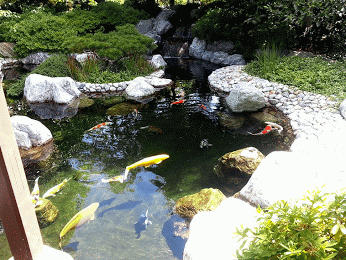



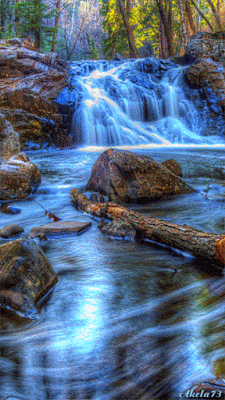


Clancy's comment: I included some of my favourites today.
I'm ...


Published on March 04, 2017 14:21
March 3, 2017
4 March 2017 - THE BABOON

THE BABOON
G'day folks,
Baboons are African and Arabian Old World monkeys belonging to the genus Papio, part of the subfamily Cercopithecinae. The five species are some of the largest non-hominoid members of the primate order; only the mandrill and the drill are larger.
Baboons are noisy and sociable animals. They exhibit many behavioral traits that are considered to be 'human-like'. The bond between mother and infant baboon is very special, for example, and they follow a daily routine much like our own. Baboons are highly adaptable, living in a variety of habitats throughout Central Africa.

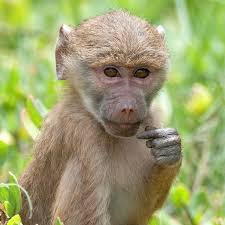


Amazing Facts About the BaboonBaboons are social primates who tend to live in groups of around 50 individuals (groups can be up to 300 though!). They will be routinely seen participating in social behaviours such as grooming and food sharing.Baboons are primarily vegetarian however they will eat insects, and occasionally fish, birds and small mammals.Baboons have a range of different vocalisations for communicating with each other. Over 30 distinct vocalisations including grunts and screams are used in addition to a plethora of non-vocal gestures such as shrugging and lip smacking.There are five species of baboons. The two most common species, olive baboons and yellow baboons, live in East Africa.Baboons have loose cheeks which allow them to gather food while foraging to eat later once they return to an area of safety.Baboons’ daily routine is somewhat similar to our own. They tend to wake up around 7.30am. They spend some time in their group before going out to forage for food. They spend the daylight hours foraging, eating, resting and grooming, before heading back to their sleeping areas at night.Females tend to give birth every other year. They usually have one infant and their gestation period is 6 months.The bond between mother and infant baboon is very special. The mother will carry the young until he or she is able to ride on her back. They are in constant contact for the first few months, and the mother is very attentive. Only once an infant reaches around 4 months of age will they be allowed to play and interact with other young baboons.Baboons are very strong animals and have sharp canine teeth similar in length to lions. They will however try to avoid fighting by using intimidating vocalisations and gestures.The Guinea baboon is the smallest baboon species, while the Chacma baboon is the largest.The baboon was revered in Ancient Egyptian culture, being admired for its intelligence. The baboon was also the symbol of the god Thoth, and was sometimes depicted as a guardian of the dead in the underworld.Baboons have co-existed with human ancestors for many millions of years. The oldest baboon fossil is a skull found in South Africa that is thought to be two millions years old.

Clancy's comment: Wow, did you see those teeth?I'm ...

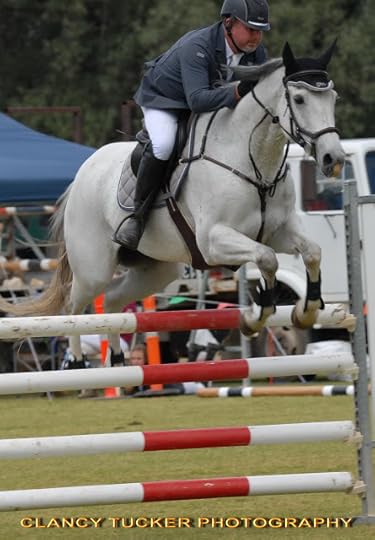
Published on March 03, 2017 13:53



